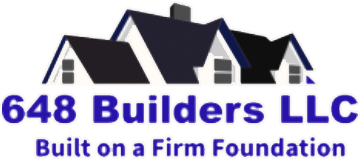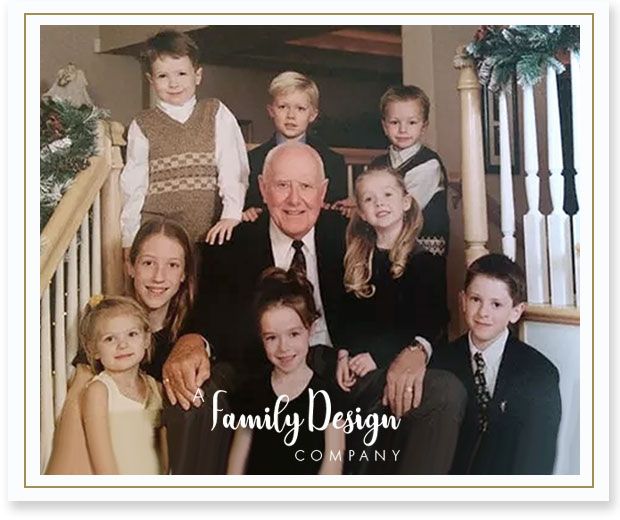
Our Story
-----------

From horse drawn lumber sleds to Virtual Reality.
From births to deaths.
From booms to busts.
From war to peace.
From Denmark to England to America to the world.
Simonson Framing and Simonson Design Lab have thrived in and reflected the underappreciated--and wonderful--American Exceptionalism.
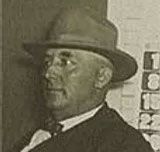
1
Gen One
-----------
Classic American Beginnings
Our family patriarch, Nels Simonson was born in Denmark and immigrated with his family to St Paul in 1880 when he was eight years old. When Nels was still a youngster, he went to work in a railroad roundhouse while his father worked on the railroad. The Simonson family moved to St. Croix Falls Wisconsin in 1890, Everyone in his family was killed in a gas light disaster while they slept. Nels, age 8, survived. Nels worked as a farm hand, a stagecoach driver and opened a meat market butcher before he entered the lumber business. Nels began to acquire real estate, purchasing farms near St. Croix Falls and selling them while retaining the timber rights
A horse-drawn wagon, a pile of logs, a shed and few acres of land is how the town of Dresser, Wisconsin was founded. Nels Simonson actually incorporated the town as Dresser Junction, Wisconsin with the formation of his sawmill. Dresser is approximately 7 miles from St. Croix Falls, Wisconsin.
Nels built a shed, hauled in some logs and began his sawmill operation. A few of his friends helped him in the day-to-day running of the mill. Every day at sunrise, Nels and his crew would harvest and move the timber. Next came the debarking and then the actual sawing of the lumber. Nels created a more efficient system to keep track of timber sizes and quantities. He built a lumber barn with shelf areas along both walls and a driveway/walkway down the middle. This was a more efficient way to organize his business.
Nels decided that besides selling to lumber distributors, he would become a distributor himself. His business evolved from a sawmill to lumber yard in 1913. Nels opened the first Simonson Lumber Company in St. Croix Falls Wisconsin. Always sensitive to the needs of his customers, Nels was realized that his customers needed more than lumber. He expanded his product offerings to include hardware and paint.
Business boomed. Nels’ enterprising business efforts resulted in rapid expansion, which also created more and more responsibility. To better serve his customers, he added delivery services. He recruited some friends with horses and wagons and had them haul loads to builder job sites.
Nels noticed that he was using a lot of coal to run his operation. So were other local companies. Since he had space for expansion, he seized another opportunity. He began bringing in the coal for sale. Nels’ business had developed from a sawmill into a lumberyard offering not only lumber, but paint, hardware and coal. Nels used his economic savvy to offer discounts for cash purchases.
Business was better than he ever expected, yet Nels was always thinking of ways to improve his business. Throughout most of the 1920’s, he had created business opportunities in western Wisconsin. Nels was keenly aware of possibilities down the road, the railroad that is. Nels seized the rail of opportunity that led to up and coming communities in Minnesota.
In 1927 Nels Simonson made his debut in the St. Cloud area with Simonson Lumber (Simonson Cashway Company). As always, he was extremely dedicated to making things work. He slept out in the cement shed, (insulation shed) and took the train back to St. Croix Falls on weekends to spend time with his family. He hired a local trucking company to haul loads for him. The community of St. Cloud grew fast and furiously, and so did Nels’ new business. Nels served the growing community with lumber, coal, building materials, hardware and paint.
Nels realized another window of opportunity with another rapidly growing industry – the gasoline business. With more and more cars in production, Nels opened Simonson Gas Stations. The gas stations were a welcome addition to the prospering business.
Simonson Lumber and Cashway Company were getting larger and larger. Nels started to pass some of the business on to his children – the next generation, Archibald, Estelle and Elizabeth. Nels helped his son Archibald establish a lumberyard in Minneapolis. But the business was heavy in accounts receivable, and when the depression came, people couldn’t pay their bills. Arch soon split from the family business, and Frank and Elizabeth Hobbs continued on with the St. Cloud area business. Today, their three sons, Michael, Stephen and Richard Hobbs own and run the company.
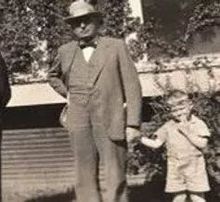
2
Gen Two
-----------
Another Beginning
His early railroad employment, Nels Simonson had often taken train rides to Crookston, Minn., and he remembered the rich Red River Valley farmland he had seen. He encouraged his son to set up a lumber business in Grand Forks, ND. With help from his father in 1932, Archibald Simonson located a piece of property along North 3rd street and started Simonson Cash Supply. It wasn’t the best of times to start up a business, but Archibald Simonson had inherited his father’s business savvy.
Arch’s business began with very little inventory; he tore down old barns and sold the salvage timber as rough-cut lumber. Arch had to borrow money from a fellow Lumberman in Minneapolis to stock his yard, and purchased lumber and building materials from him until he paid off the loan. To create the appearance that his lumberyard had ample inventory, Arch would stack full kegs of nails on top of a stack of empty kegs.
Arch rented a house with his wife and two boys at 1012 Reaves Dr Grand Forks and worked long hours with bagged lunches. Arch later purchased a home at 1510 Belmont Rd and lived there, with his family, for the reminder of his life.
Arch sold rough-cut lumber, coal, petroleum, and Murphy’s Cut Cost Concentrate to customers. During those times, customers also wanted to trade chickens or coal for lumber. He soon purchased the Allis Chalmers franchise and traded tractors for farm horses, which he then hauled to International falls MN, to sell to the logging industry.
As an extension of Simonson’s Cash Supply, in 1933 Simonson sold petroleum products to Grand Forks customers in town and to area farmers when they came to town. Depending upon the amount of the customer’s purchase and/or the distance they traveled to visit the store, Arch would give the customers a portion of the fuel purchase at no charge as part of a “Free Delivery Service”.
In 1936, Arch opened a Simonson Cash Supply in Grafton, ND. In 1940, he purchased a cattail swamp on Main Avenue in Fargo, ND, which soon became the home for the third Simonson Cash Supply. Arch was pleased with his lumberyard locations – he now had the ability to serve the entire Red River Valley with his products and services.
Arch Simonson’s hard work began to pay off. Business at all locations was thriving in this fertile farmland that his father had fondly discovered during his time with the railroad. Arch had successfully created a good, stable life for his family in the Red River Valley after suffering from the devastating effects of the Great Depression. At the age of 41, Archibald Fletcher Simonson’s life ended prematurely in the winter of1941 when the plane he was flying in crashed in Fargo, ND
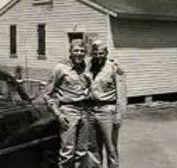
3
Gen Three
-----------
Tragedy & Triumph
His early railroad employment, Nels Simonson had often taken train rides to Crookston, Minn., and he remembered the rich Red River Valley farmland he Peter Thomas Simonson I faced the toughest business decision of his life at the age of 13. His father Archibald Simonson, was returning home aboard a Northwest Airlines DC-3 airplane. Disabled by ice on its wings as it approached the Fargo airport, the plane crash landed in a farm field north of Moorhead, MN shortly before 2 am. Only the pilot, Capt. Clarence Bates, who was thrown out of the plane survived. Archibald Simonson was among the 14 passengers who perished, either from impact, the immediate explosion or in the fire that engulfed the cabin.
Arch left behind him a legacy of hard work and business ingenuity. Nels Simonson, devastated by the loss of his only son, stepped in to oversee the business operations.
Shortly after the tragedy, Nels realized he had to help Arch’s wife, Carroll, determine the future of Simonson’s Cash Supply. Should he advise her to sell the three lumberyards to an interested buyer? Or should he continue to oversee business operations until his young grandsons were able to actively work in their father’s business? Nels turned to his 13 year-old grandson, Peter, for the final answer. Without any trace of hesitation, Peter determined his future. He would follow his father’s footsteps into the lumber business.
Nels took Peter Simonson and his younger brother, John, under his wing. He supervised the business while the boys went to school. He taught them everything he knew about business. Pete began working at the Grand Forks Simonson Cash Supply gas station in 1947 and took over the lumber operation after graduating from the University of North Dakota in 1951. John Simonson joined the business and concentrated on running the gasoline stations.
John and Peter soon separated the gasoline and the lumberyard operations into two business entities. Simonson Cash Supply became Simonson Lumber and Hardware, and the gasoline operation became Simonson Station Stores. During the 50’s, 60’s and 70’s, John and Peter expanded their petroleum business to eight store locations situated throughout North Dakota. For over 40 years, the brothers owned and operated some of the most successful retail petroleum outlets and lumberyards in North Dakota.
While the companies realized rapid growth and prosperity, the Simonson brothers also experienced their share of adversity. Each of the lumberyards had to be rebuilt after being burned to the ground: the Grand Forks store in June of 1962 ignited from a shorted –out block heater in a lumber truck; the Fargo store fire began around noon on December 23rd 1963 from an electrical fire caused by a string of Christmas lights decorating a tree in the store display window; and an arsonist burned down the Grafton store in 1994. Fueled by chemicals in paints, stains and other products, all three fires exploded quickly into massive destruction. The Grand Forks store suffered a second devastation along with most of the town of Grand Forks in the Great Flood of 1997. Thankfully, no employees in any of the tragedies suffered injury.
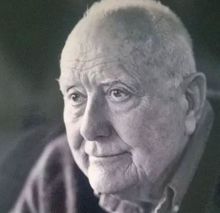
4
Gen Four
-----------
Ever Changing
After the monumental task of seeing the businesses from infancy to maturity—after children’s marriages and grandkids birth’s—both fathers worked successfully to integrate their children into the businesses. That done, John and Pete divided the businesses between them: Pete took the lumber yards and John took the stations. The forth generation--all still in the lumber industry in one way or another--introduced technological advancement centering upon computerization of every aspect of the business. They (Peter D., Richard J., and Kimberly K. Simonson) also added a significant service department to the business: Pro Install. Further, Simonson Lumber of North Dakota spun off the results of three decades of work: Simonson Design Lab
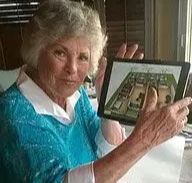
5
Gen Five
-----------
New Again
Completely separate from Simonson Lumber (Simonson Lumber now owned by a separate company but led by our brother, Richard Simonson), Simonson Design brings one part of the Simonson family back to it's beginnings by incorporating the newest and best technology and methods to the design and building business.
The new company, 85 years in the making, is owned by Peter T Simonson I's widow, Marilyn Simonson and their other two children, Peter D. Simonson and Kimberly K. Simonson.
Along with Simonson Framing, Simonson Design Studios is bringing revolutionary changes to the building and design industries

Kimberly K. Simonson
MEDIA
-------------
New Paragraph
Kimberly Simonson
Hurricane Ian
Rebuilds and Risk


OUR PARTNERS
No person stands alone. Nor does a business. We have formed these partnerships to achieve the mutual goal of home building excellence.
Our Heroes
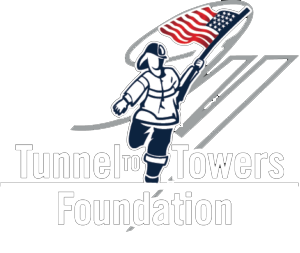
Since 9/11, Tunnel to Towers has been helping America’s heroes by providing mortgage-free homes to Gold Star and fallen first responder families with young children and by building specially-adapted smart homes for catastrophically injured veterans and first responders. We are also committed to eradicating veteran homelessness and helping America to Never Forget September 11, 2001.
concept to build

CECI BATES CUSTOM HOMES
Tom Ceci & Scott Bates are co-founders of Ceci Bates custom homes, with over 40 years combined experience.
Ceci Bates believes that a great home should inspire deep and lasting emotions, and that's what they strive to build into their homes.
At Ceci Bates Custom Homes, the wood, sticks and bricks might be the same as everyone else but imagination, passion, ideas & the build process itself is what takes them out of the box.
2024 SIMONSONDESIGNSTUDIOS.COM
All Rights Reserved
MEDIA
-------------
New Paragraph
Kimberly Simonson
Hurricane Ian
Rebuilds and Risk


OUR PARTNERS
No person stands alone. Nor does a business. We have formed these partnerships to achieve the mutual goal of home building excellence.
Our Heroes

Since 9/11, Tunnel to Towers has been helping America’s heroes by providing mortgage-free homes to Gold Star and fallen first responder families with young children and by building specially-adapted smart homes for catastrophically injured veterans and first responders. We are also committed to eradicating veteran homelessness and helping America to Never Forget September 11, 2001.
concept to build
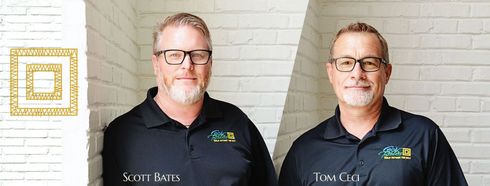
CECI BATES CUSTOM HOMES
Tom Ceci & Scott Bates are co-founders of Ceci Bates custom homes, with over 40 years combined experience.
Ceci Bates believes that a great home should inspire deep and lasting emotions, and that's what they strive to build into their homes.
At Ceci Bates Custom Homes, the wood, sticks and bricks might be the same as everyone else but imagination, passion, ideas & the build process itself is what takes them out of the box.
2024 SIMONSONDESIGNSTUDIOS.COM
All Rights Reserved








